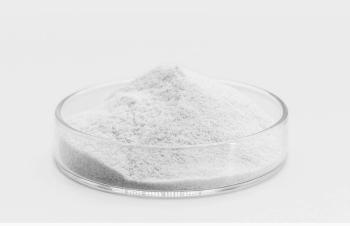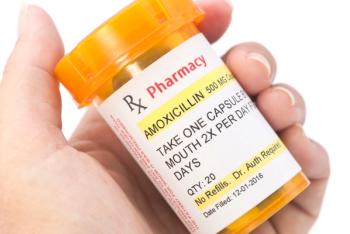
- Pharmaceutical Technology, September 2023
- Volume 47
- Issue 9
- Pages: 18-21
Formulating with Coprocessed Excipients: Current Trends
Coprocessed excipients save time and cost while improving performance in a widening array of dosage forms.
Coprocessed excipients are increasingly being used as an innovative and effective solution to overcome API challenges and reduce formulation complexity in direct compression (DC) applications. That is because coprocessing often enhances the properties of those excipients in ways that cannot be achieved if they are processed individually and then mixed together. In addition to improving processabiilty and product performance, coprocessing simplifies many aspects of tablet and capsule formulation and manufacturing and affords numerous business-related benefits.
It is important to highlight that coprocessed excipients are engineered materials designed to address specific pharmaceutical formulation and drug-delivery challenges, according to Joao Marcos Assis, global technical marketing manager at BASF Pharma Solutions. Their manufacturing involves processing of the individual ingredients using different pharmaceutical processes, leading to improved material properties. Their production does not, however, involve the formation of new covalent bonds between the components. Each ingredient maintains its individual chemical fingerprint and toxicological profile. As a result, coprocessed excipients should not be considered as novel ingredients but new ingredients. In addition, coprocessed excipients undergo rigorous testing and regulatory evaluation to ensure patient safety and effectiveness.
For all of these reasons, there is growing focus on the development and use of coprocessed excipients engineered to address top formulating problems including poor API processability, solubility, bioavailbility, and stability in many dosage forms.
Several application areas
The area in which coprocessed excipients have found the widest use is the formulation of coating premixes. “Preparation of coating solutions with consistent quality is often challenging due to their complexity. The use of ready-to-use preparations helps address this issue,” explains Philip Schäfer, head of process and formulation materials at MilliporeSigma, the Life Science business of Merck KGaA, Darmstadt, Germany.
Coprocessed excipients are commonly found in oral solid dosage formulations. In this application, these ingredients are intended to be blended with the API to ensure appropriate processing behavior and the desired final product performance. There are, according to Assis, coprocessed excipients for use in immediate-release, sustained-release, and orally dispersible disintegrating tablets (ODTs), as well as for basic tablet and capsule applications.
Many suitable excipients
Coprocessed excipients have enhanced functionality and performance compared to their individual components. “The combination of excipients in coprocessed excipients often results in synergistic effects that can address specific formulation challenges because of the improved characteristics, such as good blending properties, enhanced flowability, compactability, tabletability, superior lubrication, disintegration, and dissolution for faster and robust manufacturing processes of oral dosage forms,” Assis observes.
Typical functionalities used to generate combined excipient systems include fillers, binders, disintegrants, and lubricants. In ODT formulations, for instance, excipient systems generally combine fillers with disintegrants and/or lubricants, according to Schäfer. “A coprocessed excipient, which already includes a (super)disintegrant but at the same time yields robust and hard tablets by including a binder, can help to streamline formulation development while ensuring a consistent manufacturing process and output,” he notes.
Fillers generally comprise the major component of coprocessed excipients and work as bulking agents. The tableting and compression characteristics of lactose, microcrystalline cellulose, mannitol, dicalcium phosphate, and other fillers are improved by processing them with other ingredients, Assis comments.He adds that binders present plastic deformation characteristics and are responsible for particle binding, improving tablet strength. Povidone, copovidone, hydroxypropyl cellulose (HPC), (hydroxypropyl)methyl cellulose (HPMC), and polyvinyl alcohol-polyethylene glycol (PVA-PEG) copolymer are examples.
Disintegrants such as sodium croscarmellose, sodium starch glycolate, and crospovidone, Assis continues, promote tablet breakup, reducing disintegration time and increasing drug dissolution. Lubricants, meanwhile, reduce ejection force during tablet compression, with sodium stearyl fumarate preferred for coprocessed excipients due to its greater hydrophilicity, compatibility with APIs, and robustness to over-lubrication, according to Assis.
Manufacturing techniques
Coprocessed excipients come in many variations, as do their manufacturing techniques. In general, however, Assis stresses that standard pharmaceutical unit operations are leveraged under mild processing conditions to minimize chemical and physical instabilities. “In formulating a coprocessed material, potential chemical reactions between the ingredients must be considered, since neither new covalent bonds nor potential incompatibilities are desired or acceptable,” he says.
Common processing methods noted by Schäfer include spray drying, cogranulation, mixing, coextrusion, comilling, and cocrystallization. Assis adds that cogranulation can be achieved via fluid-bed granulation, high-shear granulation, dry granulation (roller compaction), or melt granulation. He also points to coprecipitation as another method for the generation of coprocessed excipients with improved functionalities.
“When selecting a manufacturing approach,” emphasizes Schäfer, “it is essential to identify a production strategy that creates a stable, homogeneous blend of the components and affords reliable, multi-functional performance without changing the chemical structure of the excipients employed.”
Drivers for growing acceptance
Indeed, when developing a coprocessed excipient, the main objective is to enhance its material properties, combining the most relevant functionalities, such as filler, binder, disintegrant, and lubricant, in a single material to improve drug processability while ensuring excellent product performance, according to Assis. “These enhanced excipient assets result in manufacturing cost savings, faster drug development, and reduced time-to-market,” he contends. Properties that are often enhanced include flowability, particle size distribution, blending behavior, storage stability, compressibility, and batch-to-batch consistency.
Another key benefit of coprocessed excipients is their ability to simplify formulation development and final product manufacturing. “Using coprocessed excipients reduces the number of ingredients in the formulation, simplifying development and consolidating quality-by-design (QbD) efforts. It also minimizes testing expenses by reducing quality control analysis, material handling, and documentation requirements,“ Assis explains.
Further drivers for use of excipient combinations highlighted by Schäfer include their ability to solve unmet formulation and delivery challenges, improve process efficiency, and enable new manufacturing approaches such as continuous processing, all while providing improved process economics. “In addition to combining different functionalities in one product and supporting a highly efficient and effective approach to drug development, coprocessed excipients provide flexibility to adapt formulations to specific needs,” he says.
Schäfer goes on to note that because the performance of coprocessed excipient systems is typically tailored to be robust and consistent, they are particularly well suited for processes that are highly dependent on performance parameters, such as continuous manufacturing.
In many cases, in fact, Schäfer observes that excipient systems are developed to solve a specific challenge, which may be as simple as reducing the number of process steps (e.g., the number of feeders, which is limited by the process set-up) or improving process parameters such as flow or sticking of formulations to equipment. The fact that the use of coprocessed excipients typically require less formulation and process know-how and reduces the risk of errors throughout is yet another benefit.
There are also business advantages to using coprocessed excipients, according to Assis. Beyond R&D and production benefits, these include purchasing and warehousing benefits due to a reduction of the number of excipients and excipient vendors, which reduces sourcing complexities and frees up expensive storage space, and quality and regulatory benefits from minimization of testing efforts and expenses, which reduces paperwork.
Given all of these advantages, it is not surprising that formulators are increasingly open to using coprocessed excipients. “We have observed that formulators today are more willing to explore combined excipients during product development. In part, this interest is likely due to the fact that APIs are becoming more and more challenging, particularly with respect to poor solubility, at a time when the pressure for realizing successful drug development in much less time is rising. Traditional excipients alone may not be able to overcome these hurdles,” Schäfer says.
An all-in-one solution
For oral solid dosage forms, DC is the preferred manufacturing method as it is the simplest and contributes to reduced time and cost for production. For many novel APIs under development today, however, DC is not easily implemented due to their unfavorable characteristics such as high cohesiveness and poor flow and compressibility, according to Assis. In these cases, DC processes require the use of multiple excipients to obtain suitable material flow, compressibility, and efficient lubrication.
“Determining the proper excipient combinations and concentrations is often time-consuming and expensive, however. Even after optimizing the mixture of excipients, the formulation requires several processing steps to create the final blend. Formulations based on coprocessed excipients are a solution to these challenges,” Assis explains.
“All-in-one” excipient systems that combine multiple excipients into a single material have thus become a recent focus in the market, Schäfer observes. In these products, all of the basic tableting excipients are combined such that only one additive and the API are included in the final formulation.
“This approach reduces significantly the number of excipients necessary to achieve excellent processability and performance and requires a single dry blending with the API using standard process equipment. Consequently, all-in-one coprocessed excipients reduce drug product development time and manufacturing complexity and may significantly expedite time-to-market,” Assis adds.
Several notable trends
The use of coprocessed excipients can vary depending on the properties of the API, the therapeutic requirements, and the desired formulation characteristics. In addition, formulators carefully evaluate and select coprocessed excipients to ensure they meet safety, efficacy, and regulatory standards before integrating them into pharmaceutical products, according to Assis.
One of the most important trends being enabled by coprocessed excipients is direct compression continuous manufacturing (DCCM). “Coprocessed excipients can facilitate more effective DCCM processes due to their excellent blending properties, flowability, and tabletability and minimization of the required number of gravimetric feeders and complexity of the process,” Assis notes.
Specifically, Assis highlights several benefits of coprocessed excipients for DCCM processes. The reduced number of ingredients in the formulation implies a faster material characterization and simplified design-of-experiment approach, reducing time and costs. Due to the high flowability, feeding performance in a gravimetric loss-in-weight feeder is enhanced with fewer perturbations. Development of an online process analytical technology (PAT) method is streamlined because of the reduced number of spectra and the analysis is less variable and more predictive. Besides, a dynamic residence time distribution (RTD) model of the API in a mixture with a single all-in-one coprocessed excipient can be more precise.
A second notable trend is the coprocessing of APIs with excipients, in other words coprocessed formulated drug products. This approach is being explored as a means for overcoming manufacturing challenges associated with DC formulations, Assis says.
Drugs can be pre-blended with excipients such as fumed silica, dry-granulated, or processed with low-melting point materials including poloxamers (P 188 or P 407), high-molecular PEGs (3350, 6000, 8000), and low-molecular-weight povidones (PVP K-12 or K-17) via melt granulation or melt coating using an extruder, according to Assis. Stearic acid, polyvinyl acetate, and other waxes, meanwhile, can be used for sustained-released products. “Coprocessing the API and the excipients can result in better particle shape, flowability, compressibility, stability, and dissolution, as well as taste improvement,” he contends.
Aside from these two trends, Assis highlights efforts by both pharmaceutical companies and excipient manufactures to create new coprocessed excipients with enhanced functionalities, particularly coprocessed excipients that can improve solubility, bioavailability, stability, and overall drug performance.
These improved properties have enabled coprocessed excipients to play a growing role in the development of advanced drug delivery systems, including controlled-release formulations, multi-particulate systems, and amorphous solid dispersions. “Coprocessed excipients have also been explored in topical and transdermal drug delivery systems, facilitating drug penetration through the skin and improving localized drug delivery while providing easy and fast processing,” Assis comments.
In addition, coprocessed excipients have been used to improve patient compliance by enabling the development of easier-to-swallow tablets, taste-masking formulations, and other patient-friendly dosage forms, according to Assis. He also notes that collaborations between drug manufacturers and excipient companies focused on the development of innovative coprocessed excipients for specific drugs and therapeutic areas have increased in number in recent years.
Regulatory landscape
Although formulators are now more open to coprocessed excipients than they were in the past, the regulatory landscape can still prove to be an obstacle. In contrast to traditional excipients, coprocessed excipients have no dedicated pharmacopoeia monographs and are treated almost as novel by regulatory authorities if not yet used in already approved drug products, Schäfer observes. As a result, there is some regulatory uncertainty for new coprocessed excipients because they can only be introduced as part of a new drug application. “Today, many pharmaceutical companies are hesitant to take on this increased effort and risk,” Schäfer comments.
Regulatory authorities are, however, aware that there are limitations to the ability of traditional excipients to solve current formulating challenges and that new excipient combinations can provide significant benefits in bringing a much-needed therapy to the market, according to Schäfer. He adds that activities are ongoing to improve the situation for coprocessed excipients, such as the joint IPEC, European Fine Chemicals Group, Active Pharmaceutical Ingredients Committee (a sector group of the European Chemical Industry Council) initiative regarding European Union Excipient Master Files. “We expect that the regulatory situation for excipient combination will be eased in the future, opening up many new opportunities in the pharmaceutical sector,” Schäfer concludes.
About the author
Cynthia A. Challener, PhD, is a contributing editor to Pharmaceutical Technology®.
Article details
Pharmaceutical Technology
Vol. 47, No. 9
September 2023
Pages: 18-21
Citation
When referring to this article, please cite it as Challener, C.A. Formulating with Coprocessed Excipients: Current Trends. Pharmaceutical Technology 2023 47 (9).
Articles in this issue
over 2 years ago
In Equal Measures: The Importance of Excipient Qualityover 2 years ago
Harnessing the Power of Oncolytic Virusesover 2 years ago
Improving Manufacturing Flexibility with Modulesover 2 years ago
Outsourcing Formulation Services for Biologicsover 2 years ago
Accelerating Clinical Trials in the EUover 2 years ago
Booster Shot for Pharmaover 2 years ago
Clinical Trials and their Impact on the Pharma IndustryNewsletter
Get the essential updates shaping the future of pharma manufacturing and compliance—subscribe today to Pharmaceutical Technology and never miss a breakthrough.




